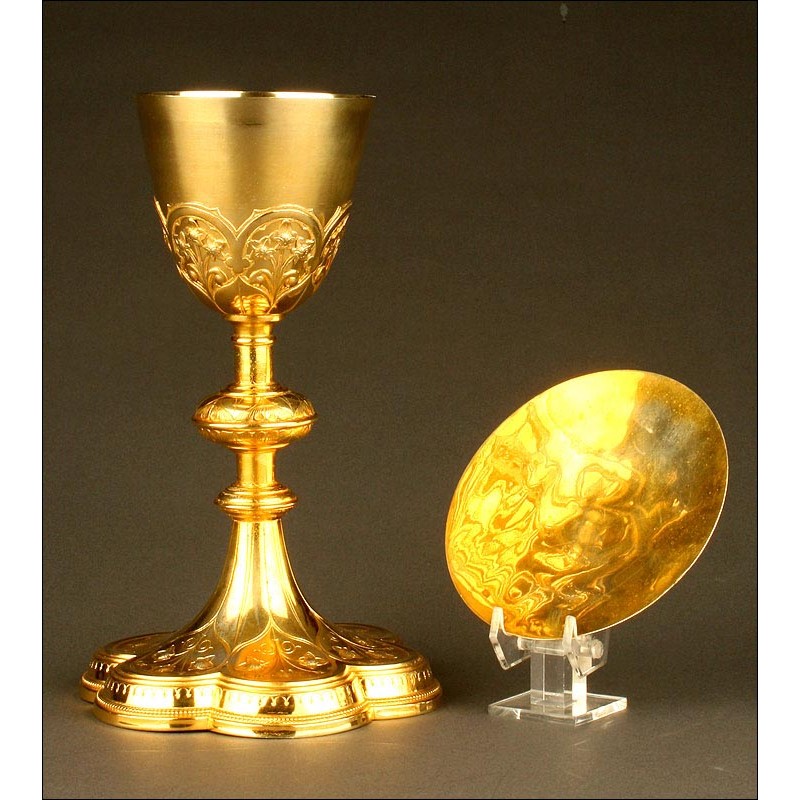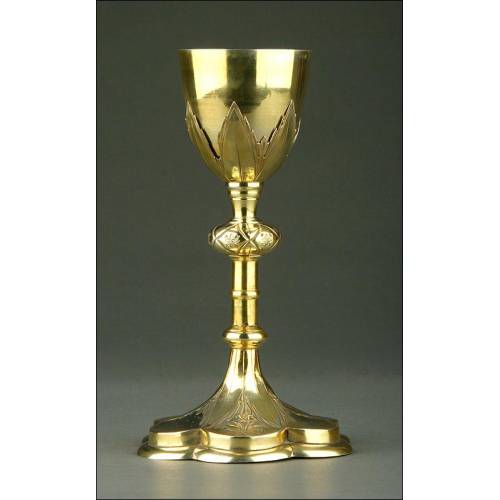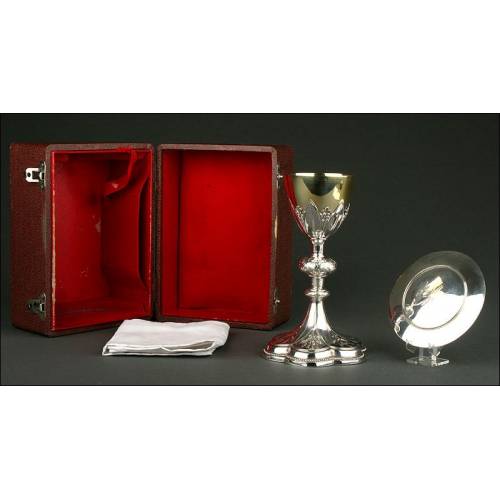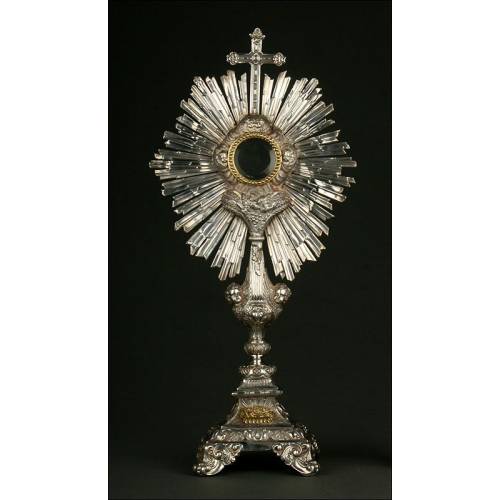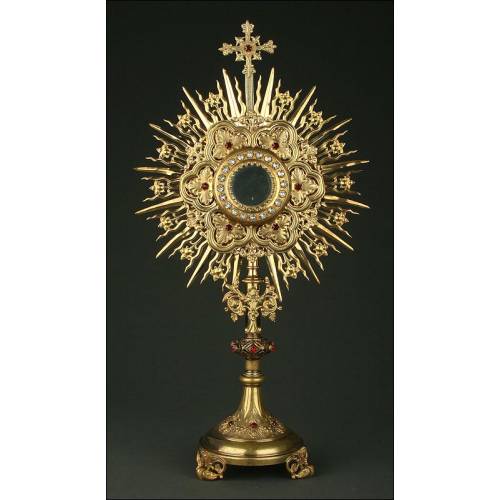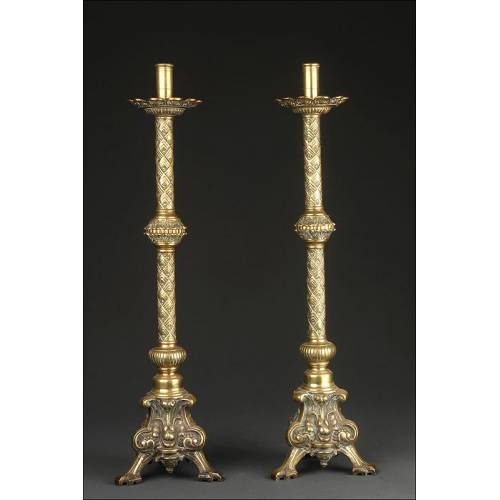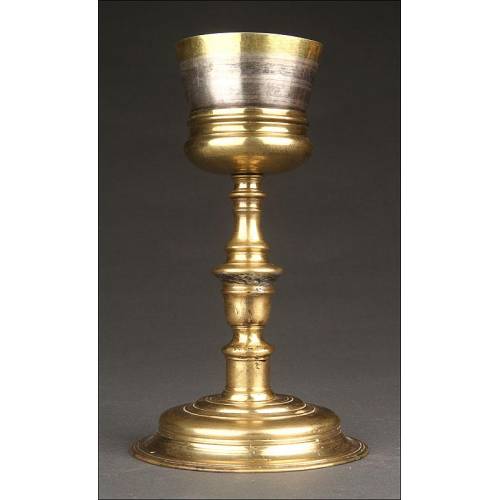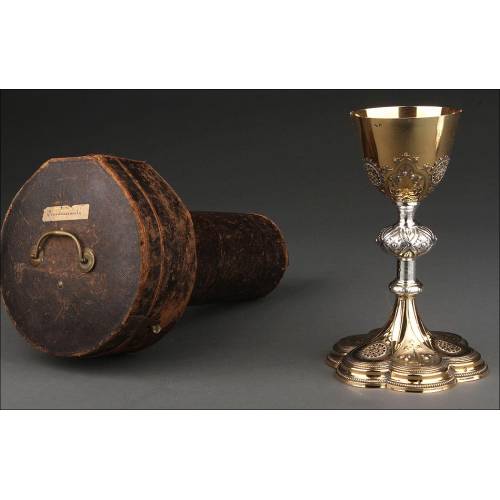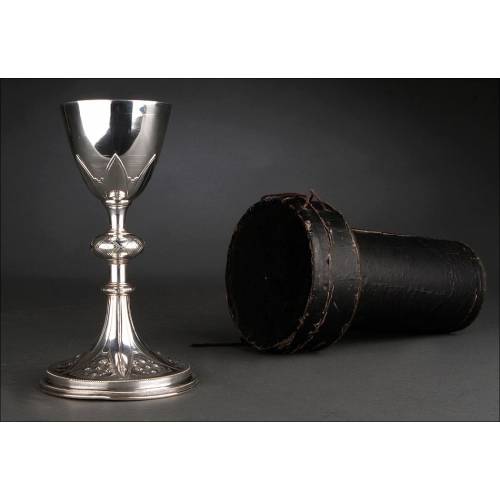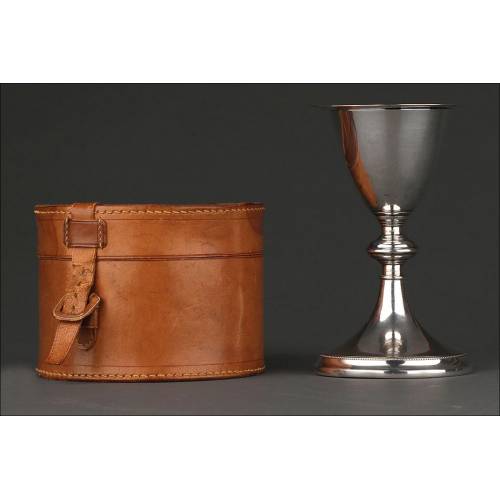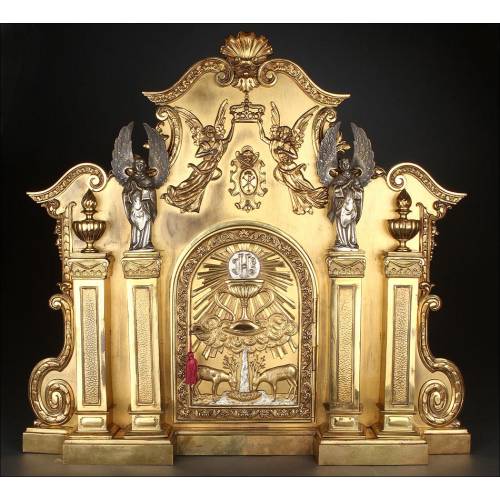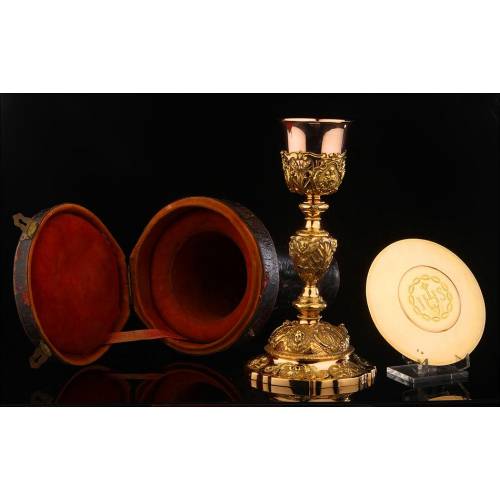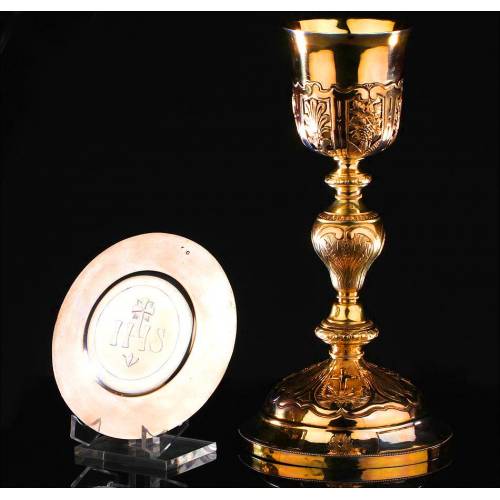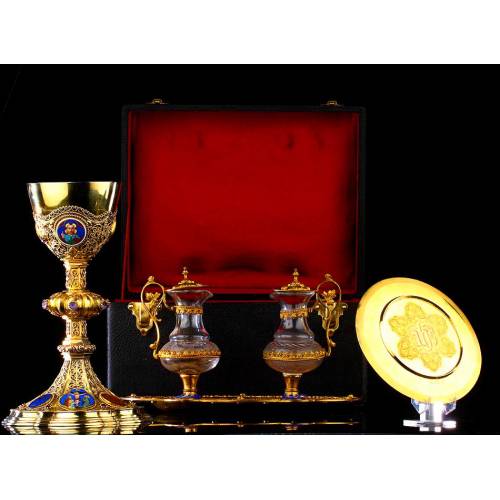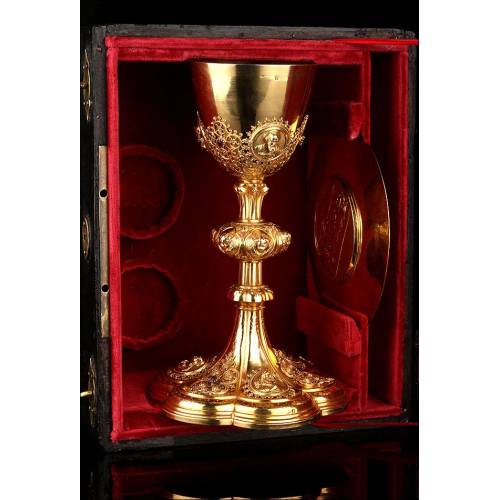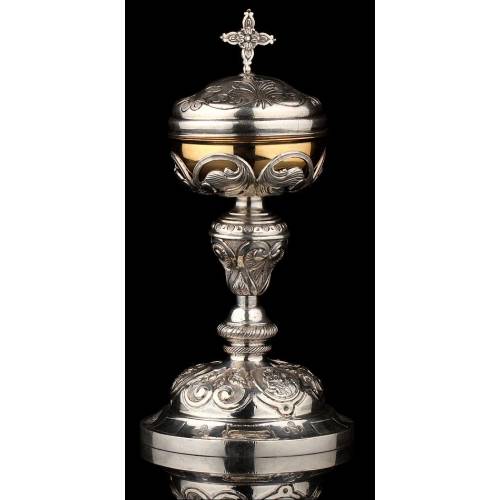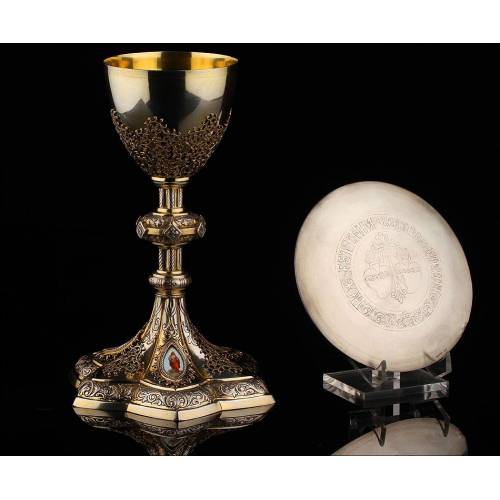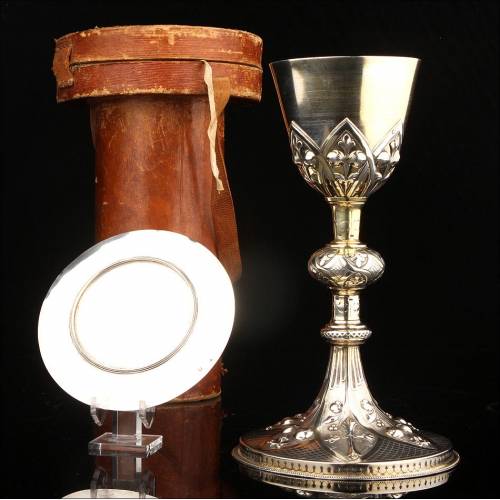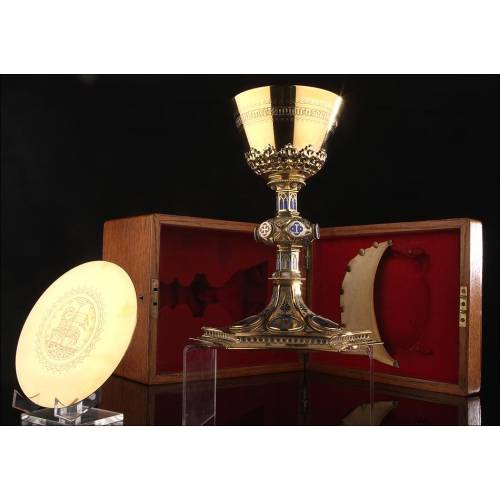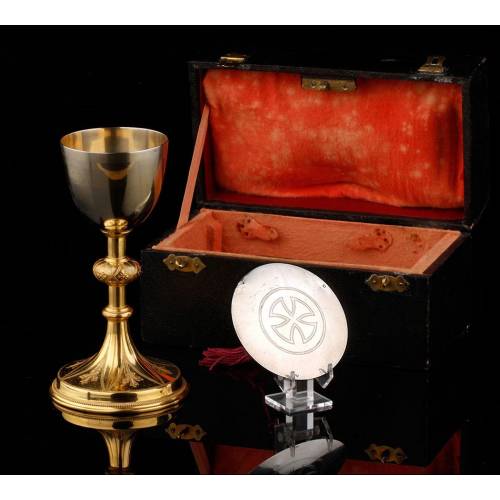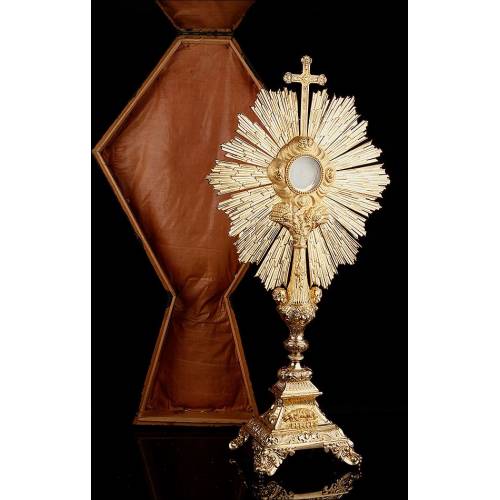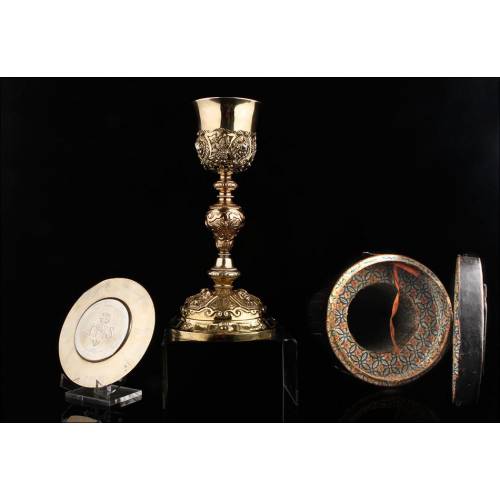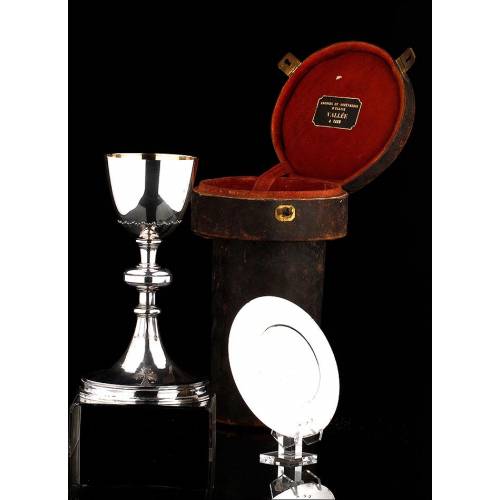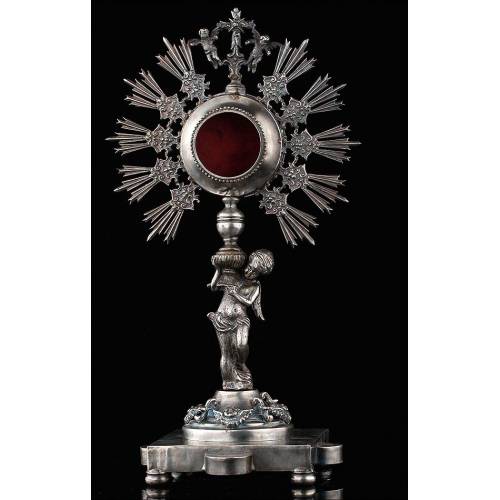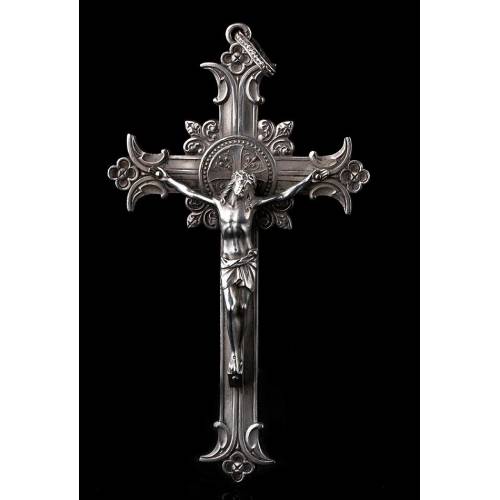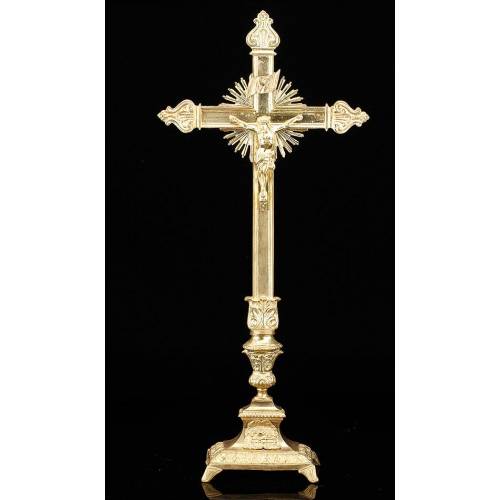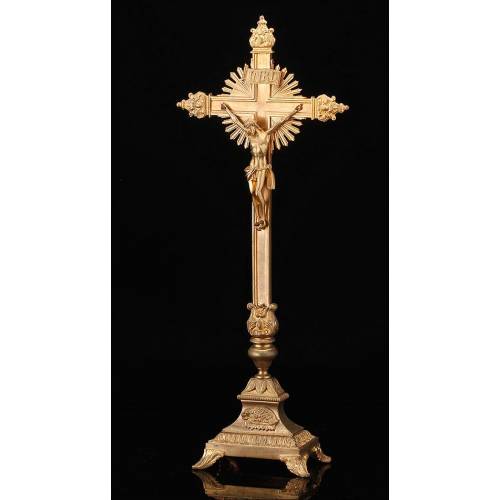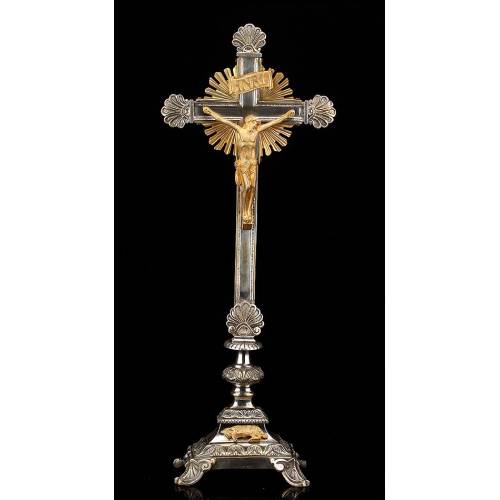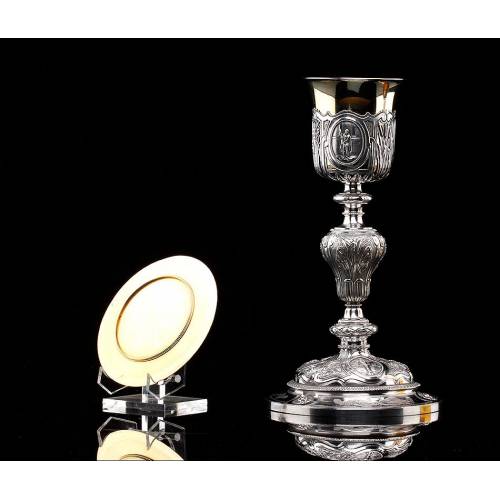J-501
Chalice and Paten in Gilt Silver. XIX
Chalice and Paten in Gilt Silver. Louis Gilles, late XIX Century.
Sold!
Magnificent Ciborium in gilded silver with Paten also in silver, made by Master goldsmith Louis Gilles at the end of the 19th century. Delicate religious piece of polylobed base on elevated, decorated with a delicate pearl and a geometric succession of waves topped by three discrete dots forming a tiny flower. In the different lobes there is a beautiful floral decoration that starts from a double spiral, topped with leaves and a kind of delicate fruit. In the front lobe, the center of the vegetal composition is occupied by a decorative Greek cross with a very original trefoil shape, which is explicitly linked to the symbolism of this type of piece. Undoubtedly in this decorative base stands out the marked geometry and the delicacy of the vegetal forms framed in ovals in the form of thick drops that come to end at the foot. The foot is made of gilded metal and has two knots in its central part; a lower one, decorated with simple rings and a thicker upper one, decorated with leaves framed between simple vertical lines that adapt to the contour of the oval. The base of the cup is profusely decorated with double threaded leaves and the same floral representations as the base, framed in semicircular arches with trefoil corners. The piece is contrasted with solid sterling silver marks with the French hallmark (Minerva) and the name of the goldsmith L*G (LOUIS GILLES), which attests to its origin and originality. The paten, also in gilded silver, is characterized by a very simple concave shape, with a flared or kicked cross, engraved on the outside as the only decoration. It appears in the same way engraved with the French stamps. Piece in solid silver, with all its genuine contrasts and in very good state of conservation and aesthetic, which makes it a truly magnificent piece.The origin of religious silver dates back to the years when, thanks to Constantine the Great, Christianity became the official state religion. From that moment on, this type of objects would become one of the main incomes of silver craftsmen. This type of religious pieces, as well as the rest of the decorative arts, go according to the style of the moment and the geographical situation.The paten is concretely the saucer in which the host is placed during the Eucharistic celebration. The shape of the paten differs according to the period to which it belongs. The oldest ones were of large size and were profusely decorated with vegetal and geometric elements, adorned with rhinestones and filigree, sometimes even with bas-reliefs with biblical passages. After the Plateresque period, the profusion of decorations disappeared from this type of objects, adopting a much simpler form as the present example, as simple concave and smooth saucers. The expression: Cleaner than the paten is made by comparison with the cleanliness of this object, since it must be completely clean, due to the use that is given to it. The cross with a cross paten or also called Cruz paté that we find at its base, is that cross whose arms are narrower when they reach the center and widen at the ends. Its name comes from the similarity of the arms of this type of cross with legs. This type of cross is mostly associated with the Knights Templar, although it was not used systematically by them. The Templars adopted a red cross on their vestments in 1147 and over the years this type of cross has been assimilated with them. In this example it is presented with the arms ending in a convex curve, thus called a smoothed and rounded cross.Beautiful and decorative religious piece, do not miss it! Measures: 23,5 x 13,5 cm; 9 cm (diameter of the cup) and 11,7 cm (diameter of the paten). Total weight: 465 grams.

